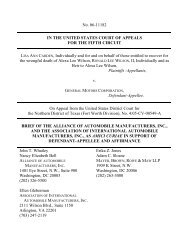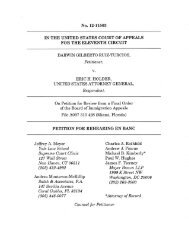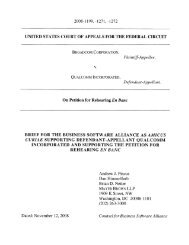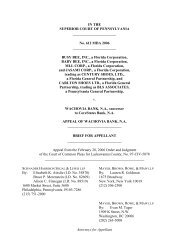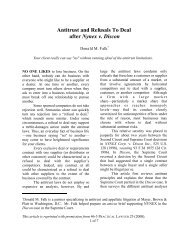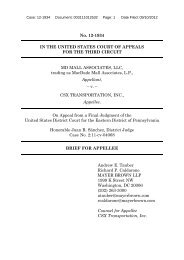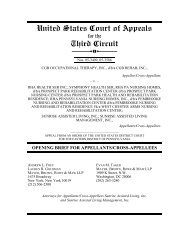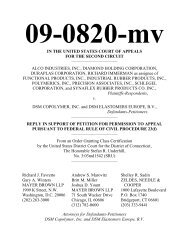No. 5-99-0830 IN THE APPELLATE COURT OF ... - Appellate.net
No. 5-99-0830 IN THE APPELLATE COURT OF ... - Appellate.net
No. 5-99-0830 IN THE APPELLATE COURT OF ... - Appellate.net
Create successful ePaper yourself
Turn your PDF publications into a flip-book with our unique Google optimized e-Paper software.
each of contract claim with respect to each class member — and the only way State Farm<br />
would have a full and fair opportunity to establish its defenses — would be to look at the<br />
individual facts surrounding each class member’s repair transaction.<br />
a. Individualized Proof Was Necessary To Determine Which Class<br />
Members Had <strong>No</strong>n-OEM Parts Installed On Their Vehicles.<br />
State Farm’s records identify the policyholders who received repair estimates<br />
specifying non-OEM parts. But those records do not show whether the non-OEM parts<br />
specified were actually installed on the policyholders’ vehicles. R. 10211. A study<br />
introduced at trial indicated that only 50% of the non-OEM parts that were specified were<br />
actually installed. R. 10164-65. In many cases, an OEM part was installed at no additional<br />
cost to the policyholder. See page 8, supra. Plaintiffs themselves admitted that this occurred<br />
in “numerous” cases. C. 13404. Obviously, a class member who received an OEM part at<br />
no additional cost cannot claim to have suffered any economic loss. Yet the only way to<br />
separate out the class members who actually had non-OEM parts installed on their vehicles<br />
from those who did not was to look at the individual facts surrounding each repair.<br />
The circuit court should have denied class certification or decertified the class when<br />
it became clear that it was impossible to tell without looking at each individual repair which<br />
members of the class had non-OEM parts installed on their vehicles. A federal district court<br />
made precisely this point recently in denying certification of a class of purchasers of<br />
Chrysler vehicles that had been painted with an allegedly inferior paint process. See<br />
Sanneman v. Chrysler Corp., 2000 WL 257452 (E.D. Pa. 2000). As the court noted, “the<br />
practical issue of actually identifying class members” — proving whose vehicles had<br />
suffered or were suffering paint delamination — “presents serious administrative burdens<br />
-36-



